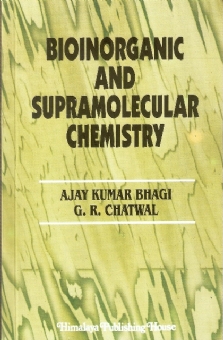Bioinorganic and Supramolecular Chemistry
no information available
The main features of this text is to present the core information on the subject in an easily accessible format that is ideally suited to student understanding. This text covers the syllabi of most of undergraduate and post graduate courses on the basis of guidelines given by UGC. This text is equally useful to inorganic chemists as well as biologists and biochemists. A new approach has been adopted in division of chapters which is based upon biological functions rather than discussing biochemistry metal wise. The inter-relationship between Bioinorganic Chemistry and Supramolecular Chemistry has been well taken up. This text is an attempt to answer the questions which intrigued the minds of many, such as : How is metal ion bound to a particular biomolecule or enzyme? What is the role of metal ion and non-metals in biological process? How is a particular metal ion is selected for biological function? How and where metal ions are stored in living world? How are these metal ions transported from and in biological systems? Is there any medicinal use of metal ions? How biomolecules are combining to form supramolecules? How biomolecules are so selective in recognising a particular ion or molecule? What is the role of supramolecular catalysis? What is the importance of molecular and supramolecular devices? The key features of this book is to present the core information on the subject in an easily accessible format that is ideally suited to student understanding. A sincere attempt has been made to cover most of the topics of interest and to cover the syllabi of most of undergraduate and post graduate courses on the basis of guidelines given by UGC. This book will be equally useful to inorganic chemists as well as biologists and biochemists. Contents - 1. Introduction to Bioinorganic Chemistry 2. Role of Metals and Non-Metals in Biological Systems - An Overview 3. Essential Trace Elements and Chemical Toxicology 4. Transport and storage of Metals 5. Transport and Storage Proteins 6. Electron Carriers 7. Metalloenzymes 8. Photoredox and Non-Protein Metallobiomolecules 9. Metal and its Complexes as Therapeutic Agents 10. Supramolecular Chemistry 11. Molecular Recognition 12. Supramolecular Reactions and Catalysis 13. Supramolecular Assemblies ... Read more Read less











